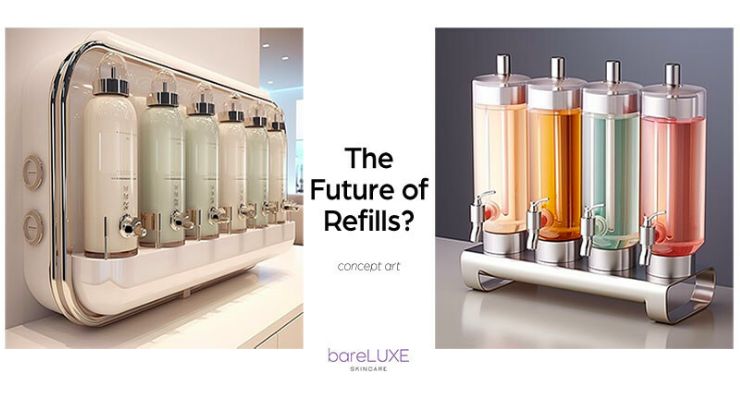06.07.23
bareLUXE has released a comprehensive market research study that provides insights into the paradoxes and obstacles that hinder the widespread adoption of refillable personal care products, despite increasing consumer awareness and interest in sustainable practices.
While 79.3% of respondents view sustainability as important when making purchasing decisions, only 23.4% currently use refillable skincare products; however, serums, lotions, and other personal care products were less than 5% and perfume refills <1%. The remainder were makeup (i.e., refillable eye shadow palettes).
Although 4% of those surveyed stated that they were unlikely to be convinced, a significant number expressed their requirements for a shift to refillable products: substantial proof of impact (34%), competitive pricing (34%), or the introduction of refillable options by their favored brands (43%).
Both brands and consumers agreed that in-store refilling of large containers represents the most sustainable choice. Yet, the practicalities of this method make it the most complicated option to implement without significant collaboration between brands and retailers.
"To truly make a difference, we need unity in our objectives and consistency in our efforts," added Dr. Smith. "There will always be competition and consumerism, but until there is some coordination and cooperation, we will never see meaningful, impactful change."
By sharing this market research, bareLUXE hopes to encourage a more cooperative approach across the skincare industry, enabling the sector to overcome these challenges and facilitate wider consumer adoption of sustainable practices.
Read about how packaging suppliers are rising to the challenge with durable containers that are made sustainably and designed to be refilled multiple times.
Consumer Beliefs vs. Behaviors
The research reveals a distinct disconnect in consumer beliefs and behaviors.While 79.3% of respondents view sustainability as important when making purchasing decisions, only 23.4% currently use refillable skincare products; however, serums, lotions, and other personal care products were less than 5% and perfume refills <1%. The remainder were makeup (i.e., refillable eye shadow palettes).
Obstacles to Consumer Adoption
The study identifies multiple contributing factors to this paradox, including consumers' difficulty finding available options (50.6%), non-availability from their preferred brands (36.8%), concerns about product contamination and spillage (31%), and skepticism about the actual sustainability of refills (17%).Potential Incentives
The research also sheds light on potential incentives that could increase consumer adoption of refillable skincare products.Although 4% of those surveyed stated that they were unlikely to be convinced, a significant number expressed their requirements for a shift to refillable products: substantial proof of impact (34%), competitive pricing (34%), or the introduction of refillable options by their favored brands (43%).
Both brands and consumers agreed that in-store refilling of large containers represents the most sustainable choice. Yet, the practicalities of this method make it the most complicated option to implement without significant collaboration between brands and retailers.
A Need for More Transparency
"The study confirms the paradoxes surrounding the adoption of refillable personal care products, which are both complex and interconnected," states Dr. Heather Smith, Founder and CEO of bareLUXE Skincare. "There's a clear need for more transparency, collaboration, and shared understanding between brands, retailers, and consumers. Releasing this data is just one step towards answering some questions.""To truly make a difference, we need unity in our objectives and consistency in our efforts," added Dr. Smith. "There will always be competition and consumerism, but until there is some coordination and cooperation, we will never see meaningful, impactful change."
By sharing this market research, bareLUXE hopes to encourage a more cooperative approach across the skincare industry, enabling the sector to overcome these challenges and facilitate wider consumer adoption of sustainable practices.
Beauty Begins to Embrace Refillable Packaging
Refillable packaging options are soaring. Refillable and reusable packaging sales were estimated at $42 billion in 2022 and are projected to grow 5% annually, rising to $53.5 billion by 2027—which is forecasted to be 4.2% of all global packaging sales, according to Smithers.Read about how packaging suppliers are rising to the challenge with durable containers that are made sustainably and designed to be refilled multiple times.




















